Abstract
Laboratory research in toxicology has progressed far beyond reliance on measures of mortality to make use of sophisticated behavioral preparations that can evaluate the consequences of sublethal toxicant exposure. In contrast, field studies have not evolved as rapidly. Approaches developed by experimental psychologists and ethologists provide powerful and complementary methodologies to the study of environmental pollutants and behavior. Observational data collection techniques can easily be used to broaden the number of questions addressed regarding sublethal exposure to toxic agents in both field and laboratory environments. This paper provides a background in such techniques, including construction of ethograms and observational methodologies, and the use of laboratory analogues to naturally occurring activities such as social behavior, predation, and foraging. Combining ethological and experimental approaches in behavior analysis can result in a more comprehensive evaluation of the effects of environmental contaminants on behavior.
Full text
PDF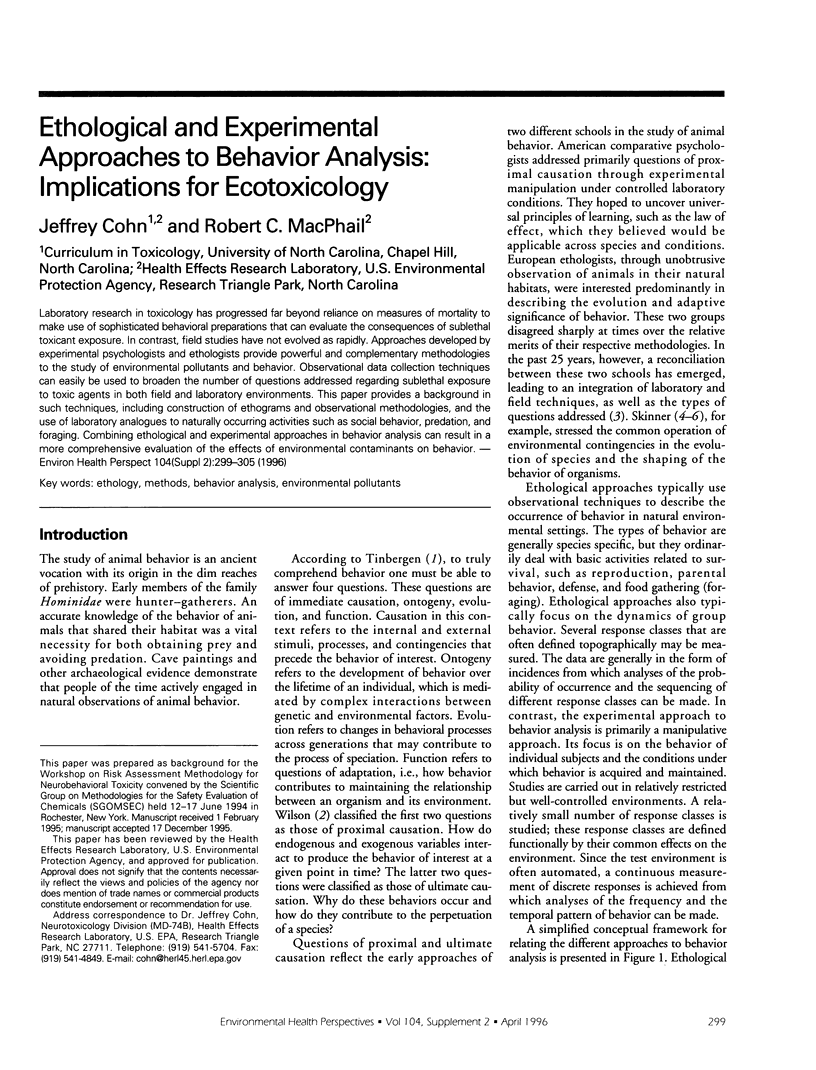
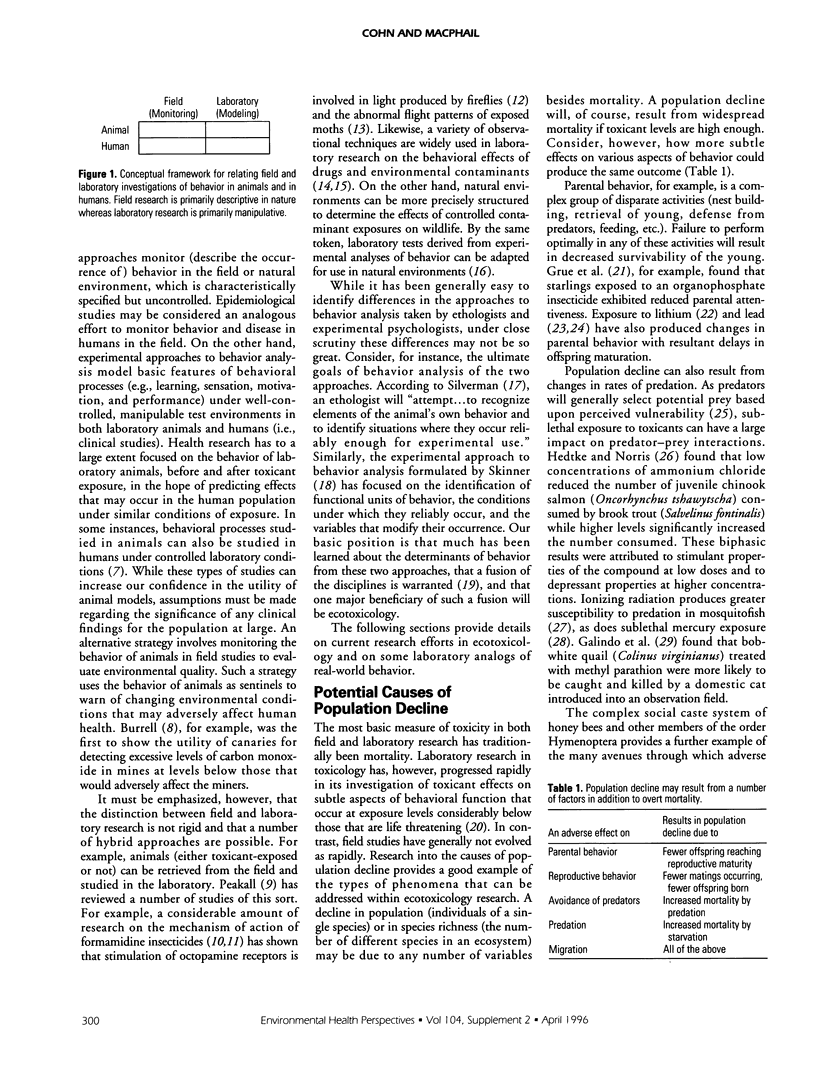
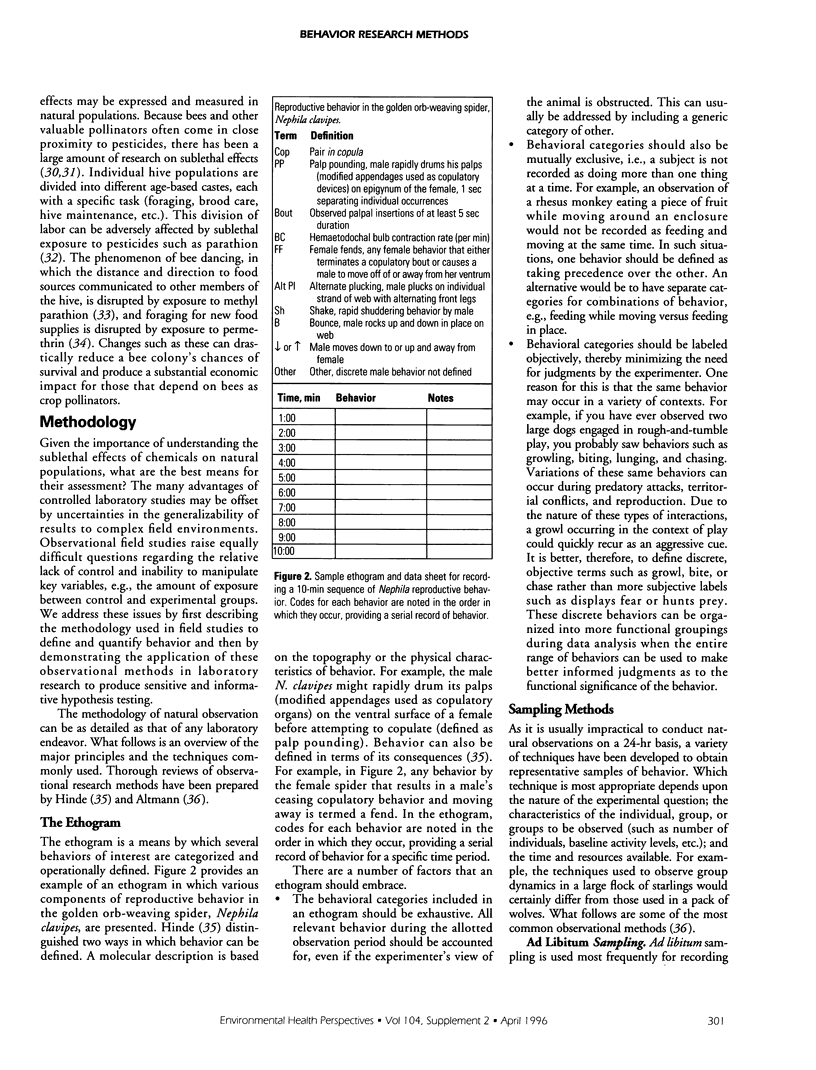
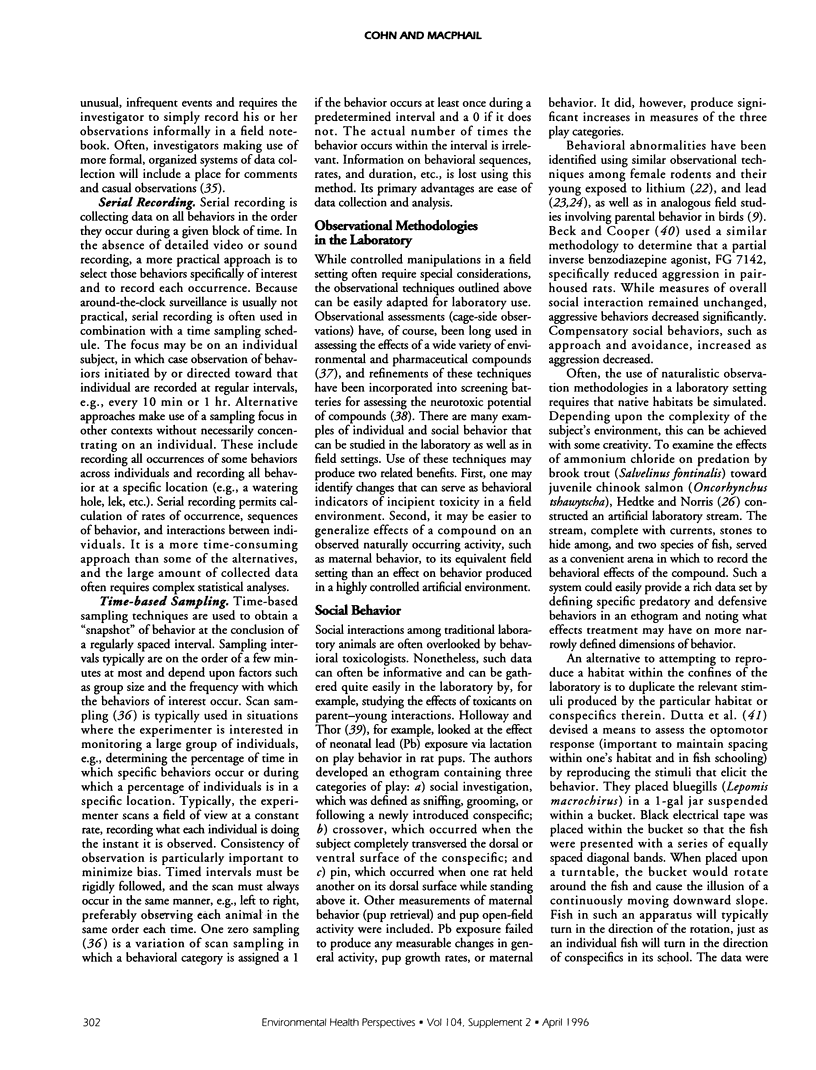
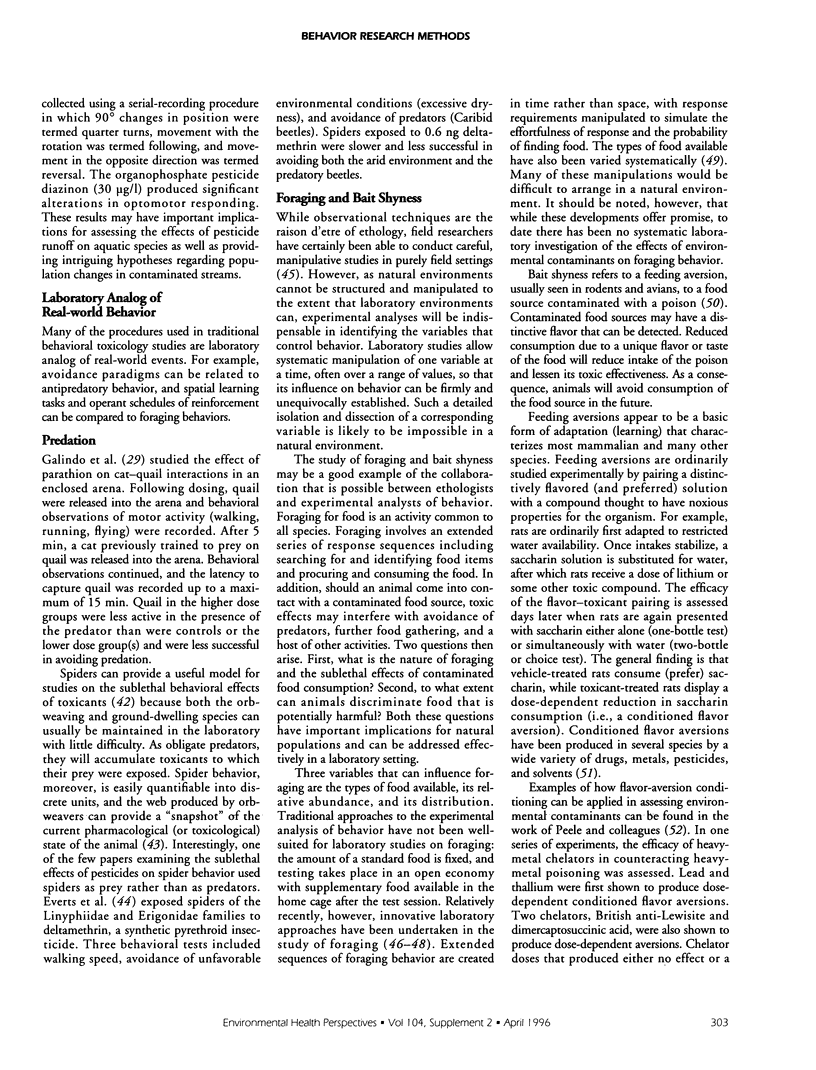
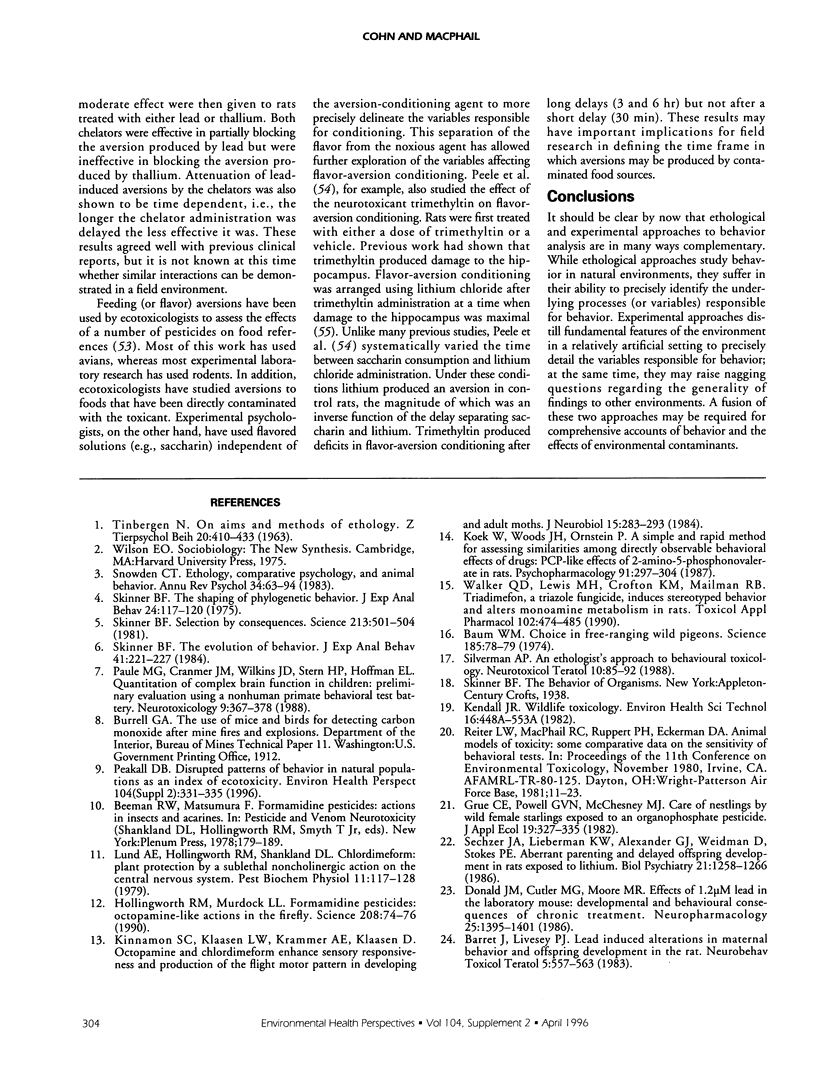
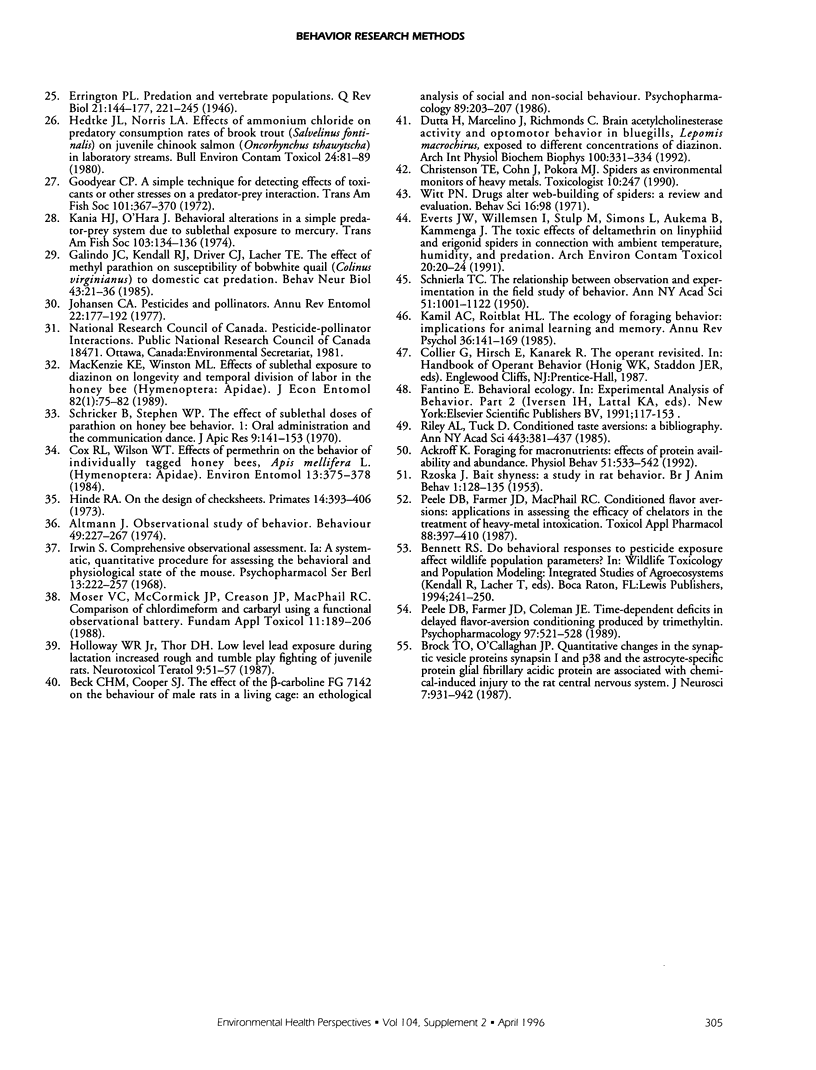
Selected References
These references are in PubMed. This may not be the complete list of references from this article.
- Ackroff K. Foraging for macronutrients: effects of protein availability and abundance. Physiol Behav. 1992 Mar;51(3):533–542. doi: 10.1016/0031-9384(92)90176-3. [DOI] [PubMed] [Google Scholar]
- Altmann J. Observational study of behavior: sampling methods. Behaviour. 1974;49(3):227–267. doi: 10.1163/156853974x00534. [DOI] [PubMed] [Google Scholar]
- Barrett J., Livesey P. J. Lead induced alterations in maternal behavior and offspring development in the rat. Neurobehav Toxicol Teratol. 1983 Sep-Oct;5(5):557–563. [PubMed] [Google Scholar]
- Baum W. M. Choice in free-ranging wild pigeons. Science. 1974 Jul 5;185(4145):78–79. doi: 10.1126/science.185.4145.78. [DOI] [PubMed] [Google Scholar]
- Beck C. H., Cooper S. J. The effect of the beta-carboline FG 7142 on the behaviour of male rats in a living cage: an ethological analysis of social and nonsocial behaviour. Psychopharmacology (Berl) 1986;89(2):203–207. doi: 10.1007/BF00310630. [DOI] [PubMed] [Google Scholar]
- Brock T. O., O'Callaghan J. P. Quantitative changes in the synaptic vesicle proteins synapsin I and p38 and the astrocyte-specific protein glial fibrillary acidic protein are associated with chemical-induced injury to the rat central nervous system. J Neurosci. 1987 Apr;7(4):931–942. doi: 10.1523/JNEUROSCI.07-04-00931.1987. [DOI] [PMC free article] [PubMed] [Google Scholar]
- Donald J. M., Cutler M. G., Moore M. R. Effects of 1.2 microM lead in the laboratory mouse: developmental and behavioural consequences of chronic treatment. Neuropharmacology. 1986 Dec;25(12):1395–1401. doi: 10.1016/0028-3908(86)90114-0. [DOI] [PubMed] [Google Scholar]
- Dutta H., Marcelino J., Richmonds C. Brain acetylcholinesterase activity and optomotor behavior in bluegills, Lepomis macrochirus exposed to different concentrations of diazinon. Arch Int Physiol Biochim Biophys. 1992 Sep-Oct;100(5):331–334. doi: 10.3109/13813459209000721. [DOI] [PubMed] [Google Scholar]
- Everts J. W., Willemsen I., Stulp M., Simons L., Aukema B., Kammenga J. The toxic effect of deltamethrin on linyphiid and erigonid spiders in connection with ambient temperature, humidity, and predation. Arch Environ Contam Toxicol. 1991 Jan;20(1):20–24. doi: 10.1007/BF01065323. [DOI] [PubMed] [Google Scholar]
- Galindo J. C., Kendall R. J., Driver C. J., Lacher T. E., Jr The effect of methyl parathion on susceptibility of bobwhite quail (Colinus virginianus) to domestic cat predation. Behav Neural Biol. 1985 Jan;43(1):21–36. doi: 10.1016/s0163-1047(85)91454-2. [DOI] [PubMed] [Google Scholar]
- Hedtke J. L., Norris L. A. Effect of ammonium chloride on predatory consumption rates of brook trout (Salvelinus fontinalis) on juvenile chinook salmon (Oncorhynchus tshawytscha) in laboratory streams. Bull Environ Contam Toxicol. 1980 Jan;24(1):81–89. doi: 10.1007/BF01608079. [DOI] [PubMed] [Google Scholar]
- Hollingworth R. M., Murdock L. L. Formamidine pesticides: octopamine-like actions in a firefly. Science. 1980 Apr 4;208(4439):74–76. doi: 10.1126/science.208.4439.74. [DOI] [PubMed] [Google Scholar]
- Holloway W. R., Jr, Thor D. H. Low level lead exposure during lactation increases rough and tumble play fighting of juvenile rats. Neurotoxicol Teratol. 1987 Jan-Feb;9(1):51–57. doi: 10.1016/0892-0362(87)90070-5. [DOI] [PubMed] [Google Scholar]
- Irwin S. Comprehensive observational assessment: Ia. A systematic, quantitative procedure for assessing the behavioral and physiologic state of the mouse. Psychopharmacologia. 1968 Sep 20;13(3):222–257. doi: 10.1007/BF00401402. [DOI] [PubMed] [Google Scholar]
- Kamil A. C., Roitblat H. L. The ecology of foraging behavior: implications for animal learning and memory. Annu Rev Psychol. 1985;36:141–169. doi: 10.1146/annurev.ps.36.020185.001041. [DOI] [PubMed] [Google Scholar]
- Kinnamon S. C., Klaassen L. W., Kammer A. E., Claassen D. Octopamine and chlordimeform enhance sensory responsiveness and production of the flight motor pattern in developing and adult moths. J Neurobiol. 1984 Jul;15(4):283–293. doi: 10.1002/neu.480150405. [DOI] [PubMed] [Google Scholar]
- Koek W., Woods J. H., Ornstein P. A simple and rapid method for assessing similarities among directly observable behavioral effects of drugs: PCP-like effects of 2-amino-5-phosphonovalerate in rats. Psychopharmacology (Berl) 1987;91(3):297–304. doi: 10.1007/BF00518181. [DOI] [PubMed] [Google Scholar]
- Moser V. C., McCormick J. P., Creason J. P., MacPhail R. C. Comparison of chlordimeform and carbaryl using a functional observational battery. Fundam Appl Toxicol. 1988 Aug;11(2):189–206. doi: 10.1016/0272-0590(88)90144-3. [DOI] [PubMed] [Google Scholar]
- Paule M. G., Cranmer J. M., Wilkins J. D., Stern H. P., Hoffman E. L. Quantitation of complex brain function in children: preliminary evaluation using a nonhuman primate behavioral test battery. Neurotoxicology. 1988 Fall;9(3):367–378. [PubMed] [Google Scholar]
- Peakall D. B. Disrupted patterns of behavior in natural populations as an index of ecotoxicity. Environ Health Perspect. 1996 Apr;104 (Suppl 2):331–335. doi: 10.1289/ehp.96104s2331. [DOI] [PMC free article] [PubMed] [Google Scholar]
- Peele D. B., Farmer J. D., Coleman J. E. Time-dependent deficits in delay conditioning produced by trimethyltin. Psychopharmacology (Berl) 1989;97(4):521–528. doi: 10.1007/BF00439558. [DOI] [PubMed] [Google Scholar]
- Peele D. B., Farmer J. D., MacPhail R. C. Conditioned flavor aversions: applications in assessing the efficacy of chelators in the treatment of heavy-metal intoxication. Toxicol Appl Pharmacol. 1987 May;88(3):397–410. doi: 10.1016/0041-008x(87)90214-6. [DOI] [PubMed] [Google Scholar]
- Riley A. L., Tuck D. L. Conditioned food aversions: a bibliography. Ann N Y Acad Sci. 1985;443:381–437. doi: 10.1111/j.1749-6632.1985.tb27087.x. [DOI] [PubMed] [Google Scholar]
- Sechzer J. A., Lieberman K. W., Alexander G. J., Weidman D., Stokes P. E. Aberrant parenting and delayed offspring development in rats exposed to lithium. Biol Psychiatry. 1986 Nov;21(13):1258–1266. doi: 10.1016/0006-3223(86)90308-2. [DOI] [PubMed] [Google Scholar]
- Silverman A. P. An ethologist's approach to behavioural toxicology. Neurotoxicol Teratol. 1988 Mar-Apr;10(2):85–92. doi: 10.1016/0892-0362(88)90071-2. [DOI] [PubMed] [Google Scholar]
- Skinner B. F. Selection by consequences. Science. 1981 Jul 31;213(4507):501–504. doi: 10.1126/science.7244649. [DOI] [PubMed] [Google Scholar]
- Skinner B. F. The evolution of behavior. J Exp Anal Behav. 1984 Mar;41(2):217–221. doi: 10.1901/jeab.1984.41-217. [DOI] [PMC free article] [PubMed] [Google Scholar]
- Skinner B. F. The shaping of phylogenic behavior. J Exp Anal Behav. 1975 Jul;24(1):117–120. doi: 10.1901/jeab.1975.24-117. [DOI] [PMC free article] [PubMed] [Google Scholar]
- Walker Q. D., Lewis M. H., Crofton K. M., Mailman R. B. Triadimefon, a triazole fungicide, induces stereotyped behavior and alters monoamine metabolism in rats. Toxicol Appl Pharmacol. 1990 Mar 1;102(3):474–485. doi: 10.1016/0041-008x(90)90043-t. [DOI] [PubMed] [Google Scholar]
- Witt P. N. Drugs alter web-building of spiders: a review and evaluation. Behav Sci. 1971 Jan;16(1):98–113. doi: 10.1002/bs.3830160109. [DOI] [PubMed] [Google Scholar]


